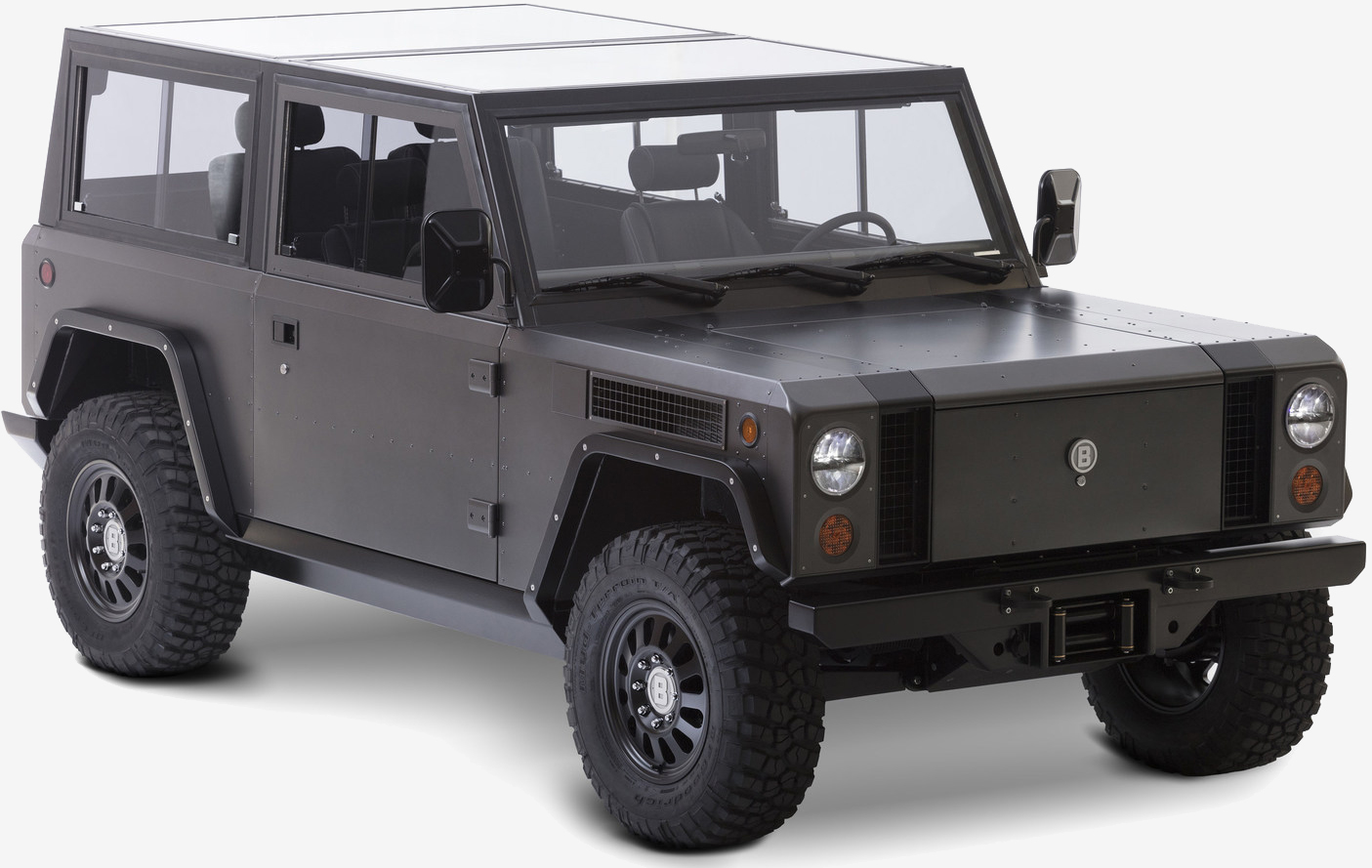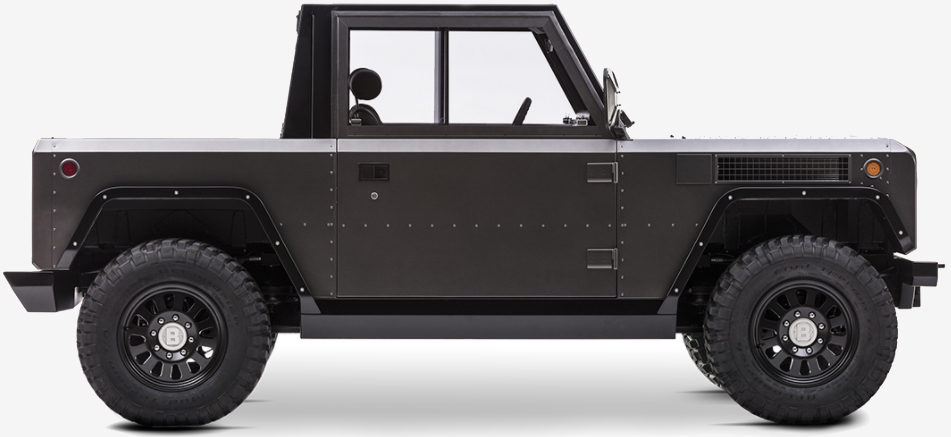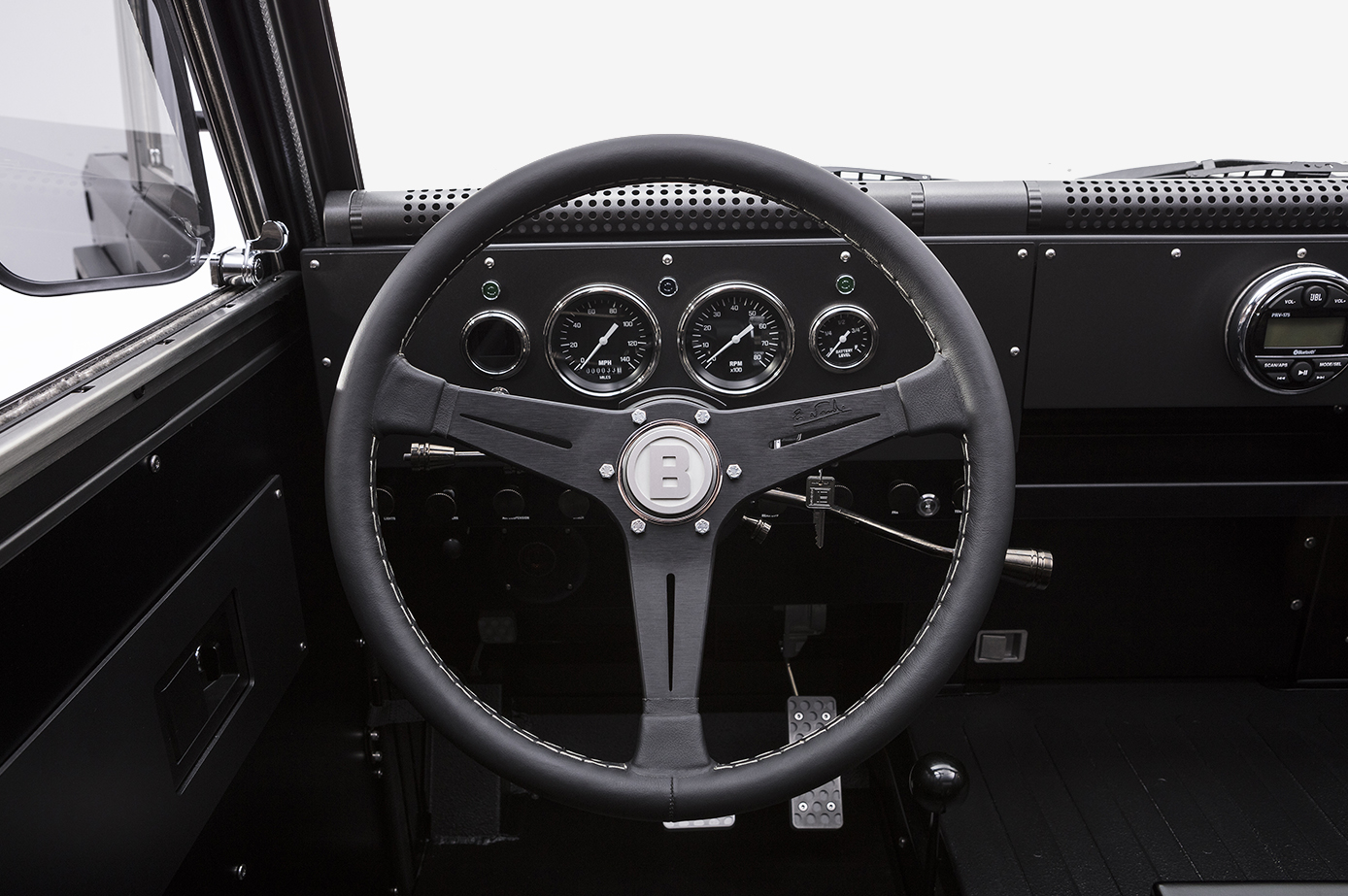
Much of the talk in the EV community this week has focused on Tesla as the first 30 owners are set to take delivery of their Model 3 sedans at a ceremony that’ll be livestreamed over the Internet this evening.
Off-road enthusiasts, however, will likely be more interested in what Bollinger Motors has to offer.
The company, founded in Hobart, New York, in 2014, unveiled its prototype sport utility truck (SUT) this week. The all-electric, all-wheel drive Bollinger B1 features a classic 3-box look and a perfect 50 / 50 weight balance from front to back and side to side. Its dual-motor powertrain generates 360 horsepower and 472 pound-feet of instant torque, enough to propel the 3,900-pound vehicle from 0-60 in 4.5 seconds en route to a top speed of 127 mph.

The B1 will offer two lithium ion battery pack options. The 60kWh pack will provide up to 120 miles of range while the larger 100kWh battery will reportedly be good for up to 200 miles between charges.
For the hardcore off-road enthusiasts, the B1 offers some pretty impressive specifications:
It sports a wheelbase of 105 inches, front and rear track of 68 inches, an approach angle of 56 degrees, departure angle of 53 degrees, and break over angle of 33 degrees. The chassis by itself weighs just 295 pounds while not sacrificing structural or torsional rigidity. The base ride height provides for 15.5 inches of ground clearance but will be adjustable using a self-leveling, 4-wheel independent, hydro-pneumatic suspension within the 10 inches of wheel travel. Disconnectable anti-roll bars allow traction enhancing, full suspension articulation during off-road maneuvers.

Bollinger Motors said it plans to announce pricing and manufacturing targets later this year, adding that it “makes sense” to try and hit the price point of a nicely equipped sport utility vehicle. Once manufacturing is finalized, B1 deliveries are targeted to start within 19 months – assuming of course that everything goes according to plan (which rarely seems to be the case in the EV industry).
https://www.techspot.com/news/70351-bollinger-b1-all-electric-all-wheel-drive-sport.html
